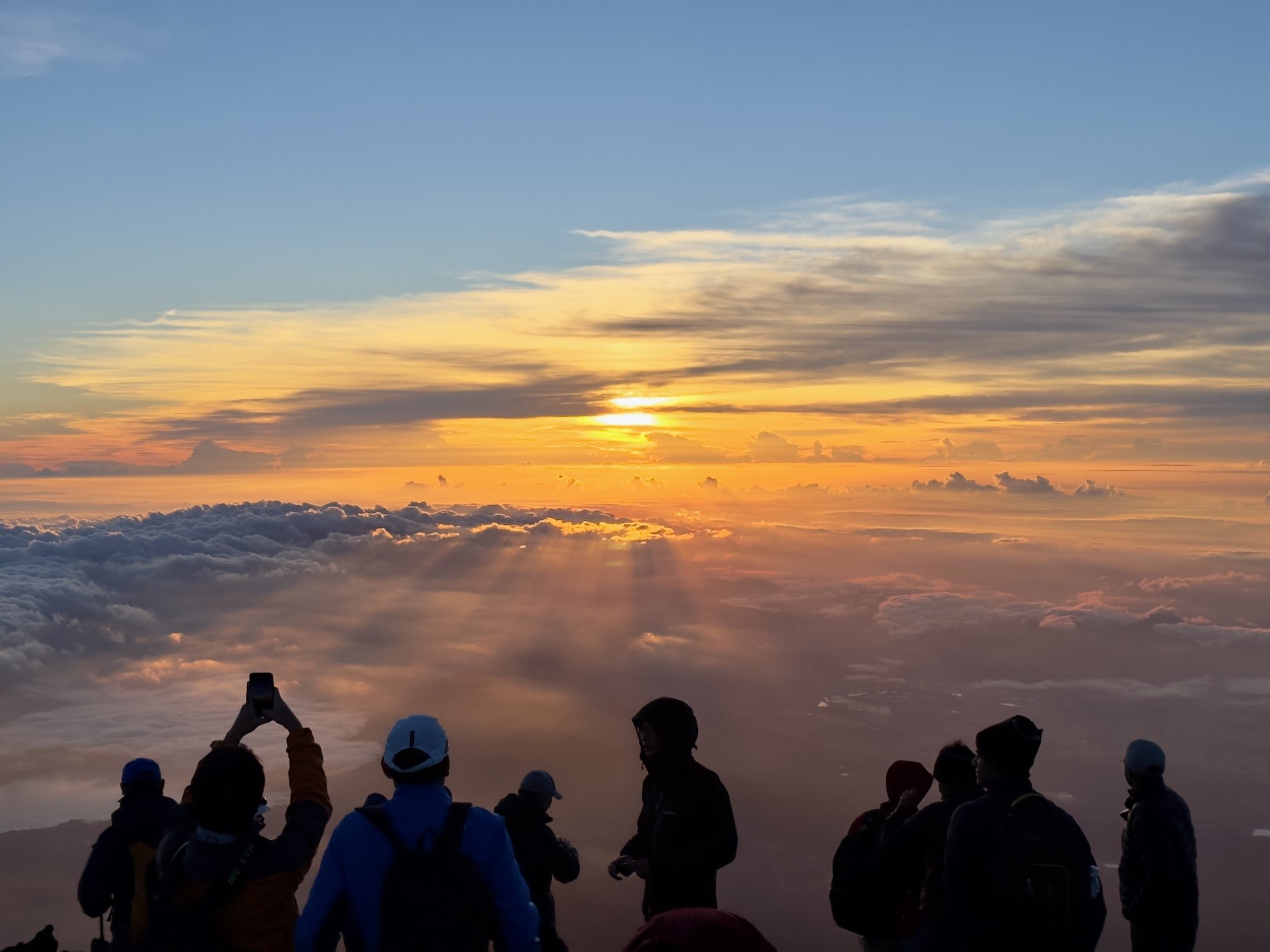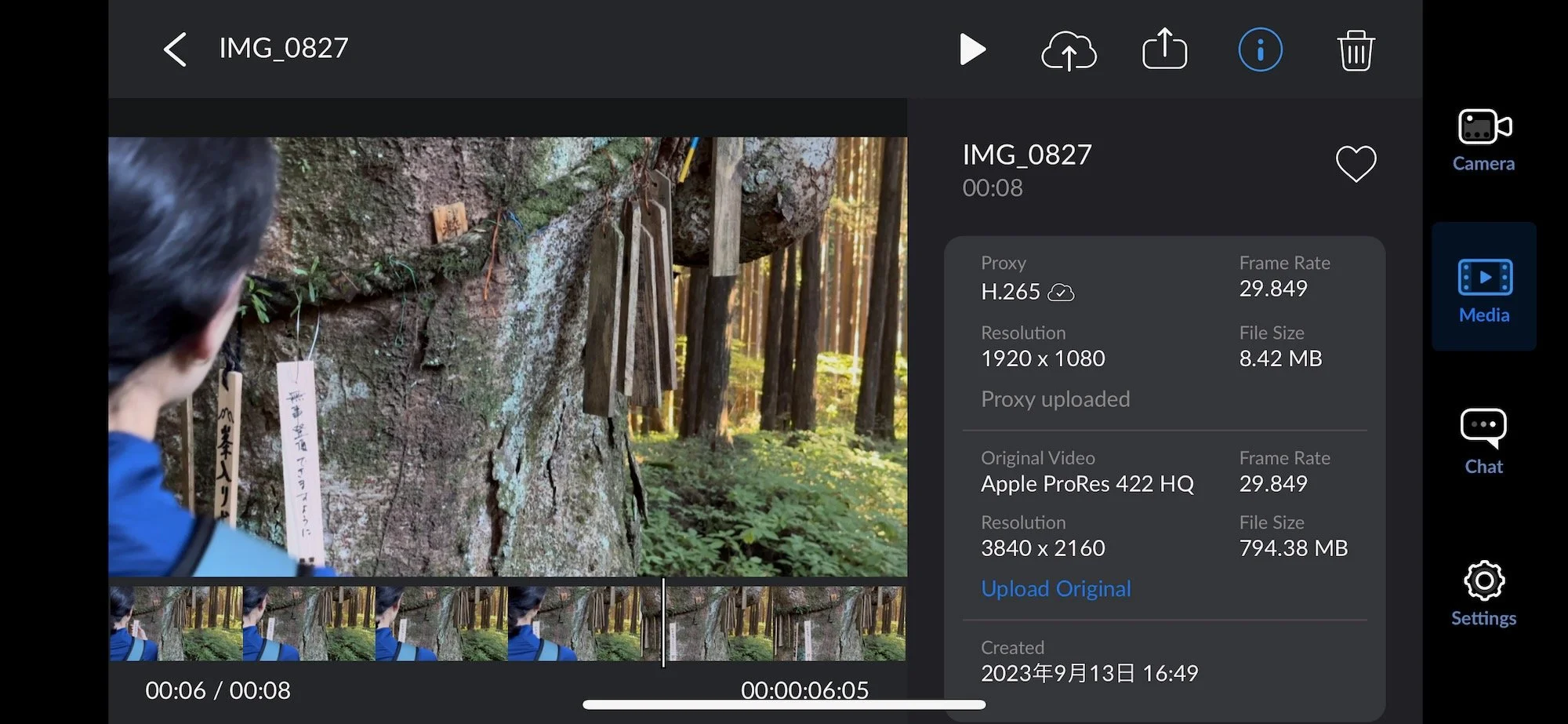Shot on iPhone - filming Mt Fuji’s cultural heritage
Summary
Within the past few months we have climbed Mt Fuji 3 (and a half!) times to film the Fujinomiya route and spent multiple days filming the cultural heritage at the base of the mountain, all shot on the iPhone 14. This article will cover the experience of filming an outdoor shoot on the iPhone in Japan, explaining the creative advantages, and limitations, of taking your phone out from your pocket to film for a client. I will finish with some thoughts on a new iPhone filming app from Blackmagic Design and the just announced iPhone 15.
What did we film and who was the client?
Mt Fuji from the base to the summit for Fujinomiya City
2023 is the 10th year of Mt Fuji being registered as a World Heritage in 2013. It’s a big mountain so many assume that the classification would be as a Natural Heritage but, in fact, Mt Fuji is a Cultural Heritage. The top quarter or so (from the 8th station) of Mt Fuji is actually the sacred grounds of the Sengen Taisha shrine (there are two shrine buildings and other religiously significant sites at the summit), connected with the main Sengen Taisha shrine in Fujinomiya City. As well as these sites there are a number of other shrines and sites around the base related to the worship of, and then eventually pilgrimage to, Mt Fuji, including now little known historical pilgrim trails with ruins of once used resthouses. Our client was Fujinomiya City, with the claim of being located at the base of the front (its a round cone shaped mountain so that claim is more cultural than natural) of Mt Fuji so our task was to cover not just the climb to the top but to also to remind the viewers of the the cultural elements that made Fujinomiya City’s Mt Fuji unique.
What did we deliver?
Two videos and one 360 video. More on the 360 bit in another post
We are still deep in the edit, but we are editing to deliver one video covering the modern way to climb Mt Fuji by the Fujinomiya route, driving/busing to the 5th station and walking up from there, and another video covering the ancient pilgrimage course from the Sengen Taisha shrine in Fujinomiya City up through the forest to the 5th station.
Additionally we also are working on a 2 minute 360 video, filmed mainly on the Insta360 1 inch camera, but I will cover this in detail in a later post.
Why film on the iPhone?
Need to keep things nimble, and mixing with 360 footage
We usually film with our Canon C70 cinema cameras, the Canon R5, or our Blackmagic Pocket 6k cameras. Or perhaps rent one of the Sonys, or even an Arri, when required. However this time, I just took my phone out of my pocket filmed. There were essentially 2 main reasons for choosing the iPhone this time.
- Climbing Mt Fuji itself is hard enough as it is (although a 5 year old did climb with us one time!), with the weather changing quickly, and low oxygen levels at the top so we wanted to keep the equipment as light, and as simple, as possible. The routes up Mt Fuji get crowded in the short 2 month long climbing season but Japanese local authorities usually require that people’s faces aren’t recognizable in the shot, meaning that we had to move fast when we found a good angle. Changing lenses or setting up a gimbal in the clouds, while tired from the climb and trying to avoid faces in the shot, all the while shooting around the weather, would mean that we’d miss the moment.
We could have used another camera for the shoots around Fuijnomiya City and the foothills of Mt Fuji, but that would mean mixing iPhone and other camera footage and, anyway, the iPhone footage was looking great so we decided to stay with the iPhone. Although, actually…..
- We were also filming for a 360 video, so needed to also film on the Insta360 One RS 1 inch 360 camera. As well as using the 360 footage for the 360 video, we reframed some of it to use in conventional video. The Insta360 1 inch has much better quality than previous 360 cameras but it is still of lesser quailty than an iPhone when reframed to conventional video so, if that was the case, the iPhone would be more than good enough.
Practicalities of filming on the iPhone
HDR ProRes is good but its still just an iPhone
We filmed on the iPhone 14 Pro, in ProRes HR 4k, using the stock photo app, sometimes switching to Cinematic Mode and sometimes using the Action Mode. No cages, no fancy cases, just handheld. Dialogue was recorded with the RODE VideoMic ME-L plugged into the lightning port of the phone.
App // We did consider using the Filmic Pro app but, as well as the interface just not feeling that intuitive, as we were also using Cinematic Mode and Action Mode, it seemed easier to stay in the same app. Each take was only 5-10 seconds as well so the auto settings in the stock photos app were generally enough.
Handheld // Before the shoot we did a test comparing the stabilisation of the iPhone walking handheld and with a DJI Osmo 4. There was no difference, in fact the iPhone might have been smoother. This is without using Action Mode. As everything was so smooth we only used Action Mode a couple of times, one particular side-one tracking shot walking/stumbling sideways in the forest stood out - perfectly smooth.
ProRes HDR // We filmed with an Iphone 14 Pro with 512gb of memory in ProRes HDR but are delivering in SDR REC.709 (the standard video colour space) so we have an almost Log-like dynamic range to work with once converted to SDR. I did notice in the edit that though that, as iPhone screen displays HDR with a peak brightness of 2000 nits (1000 nits is about standard) it can be tricky on the shoot to spot blown-out highlights. Everything just looks nice and bright on the iPhone screen and the blown-out highlights don’t stand out that much.
Sound // It was nice to be filming the ambient sound in stereo with the built in iPhone mics but for dialogue or windy locations we plugged in the RODE VideoMic. The wind jammer/deadcat is ridiculously large though so we needed to be careful with wide angle shots.
The future of iPhone filming.
Blackmagic Cam app, external recording and Log on the iPhone 15
Two days after we finished the bulk of the filming the Blackmagic Cam app was announced and, although it doesn’t have Cinematic or Action Mode, I think we would have filmed with this if it had been available. Blackmagic Design makes great camera menus and the interface on the iPhone app is very similar to what we are used to on the Blackmagic cameras. The instant upload of proxies to the Blackmagic Cloud and into the desktop DaVinci Resolve editing app is also a bonus.
screenshot from the Blackmagic Cam app
On the last day of the shoot the iPhone 15 was announced. Being able to film in Log and the USB-C port enabling recording to an external drive are features that I think we might have used on the shoot so excited to try them out. The iPhone 15 Pro is arriving in the office next this week so, after some tests, we are keen to use it on the last day of this Mt Fuji shoot, in a month’s time.
A short Director’s Cut, using only iPhone shots (and some Mavic 3 Pro drone shots)




